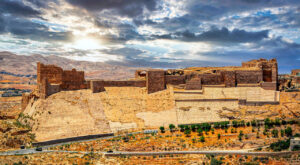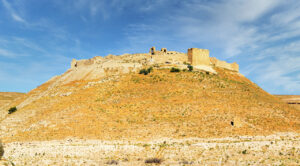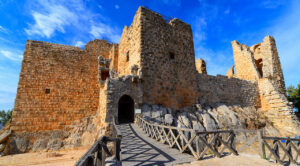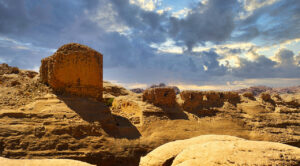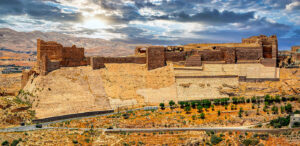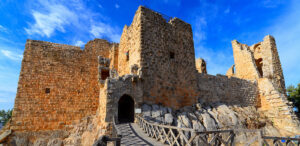The ancient Crusader Castle of Karak, later a Mamluk fortress, lies within the …
Shobak Castle (Montreal), is located on a round hilltop site that is separated …
If you are visiting Jerash from Amman, you can also visit Ajloun Castle situate …
Vaux Moise (Al Wu‘eira) is a small crusader castle founded by Baldwin I …
Ledge- and cave-fortresses are not usually included in the typologies of …
Jordan’s Crusader Castles
GUIDE TO MILITARY FORTS DURING THE CRUSADER PERIOD
Jordan, a land steeped in history, holds the imprints of ancient civilisations, each leaving behind remarkable landmarks that speak of its rich past. Among these treasures are the remnants of the Crusader period, which played a pivotal role in shaping the historical narrative of the region.
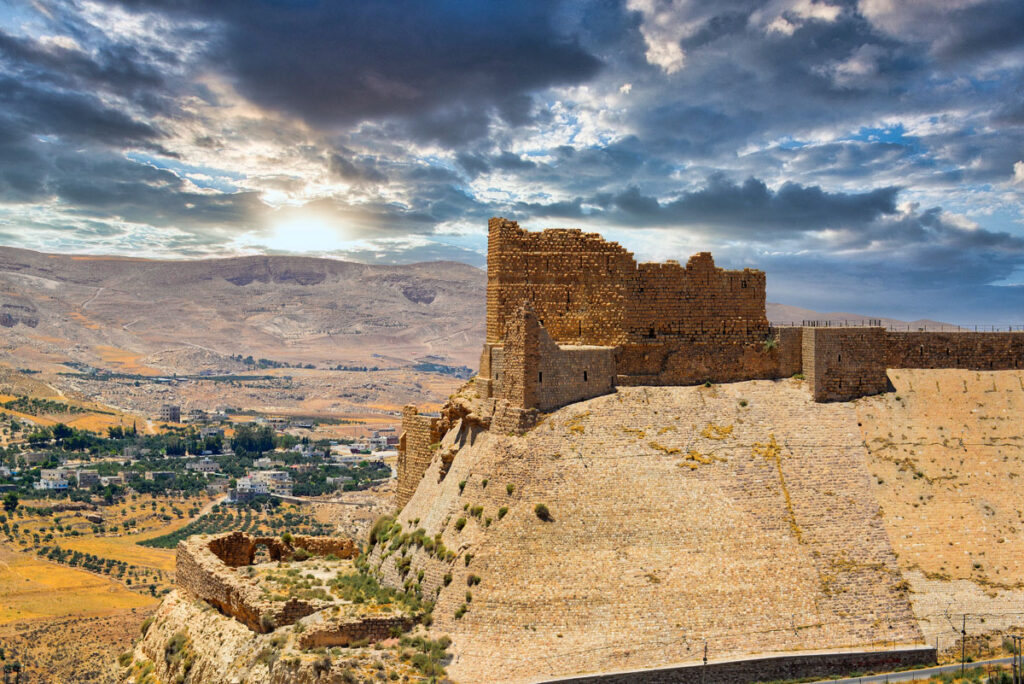
At the heart of Jordan’s Crusader history are the impressive fortresses of Karak and Montreal (Shobak). Built in the 12th century to secure key routes to Jerusalem, these castles represent extraordinary feats of military architecture.
The mighty Karak Castle, perched atop a ridge and separated from the fortified town below by a deep moat, is a stunning example of Crusader ingenuity. Originally part of the ancient Kingdom of Moab, Karak bears evidence of its multifaceted history, from its Old Testament ties as Kir Moab, to its prominence in Roman Arabia as Characmoba, and later as a Byzantine diocesan town depicted on the famed Madaba mosaic map.
Equally awe-inspiring is Montreal Castle (Shobak), the first fortress in the Crusader line of defence built by Baldwin I in 1115 CE. Perched on a conical hill, the castle showcases brilliant strategic planning, including a deep shaft with 375 steps leading to an underground water source—a vital feature during sieges.
Additional Crusader outposts like Vaux Moise near the ancient city of Petra and Al-Habis, located high within Petra’s mountainous terrain, add to Jordan’s rich tapestry of historical landmarks. Northwards, the Ajloun Castle stands as a monumental link in the chain of defence, constructed to halt Crusader advances and showcasing exquisite Islamic architecture.
These fortifications, once central to the Crusaders’ control, eventually witnessed the tide of history shift. Following his unification of Syria and Egypt, the legendary commander Saladin led his forces to victory against the Crusaders at the Battle of Hittin in 1187 CE, paving the way for the liberation of Jerusalem and ending foreign domination in Jordan.
The castles and landmarks of Jordan are more than relics; they are gateways into a vibrant past, where tales of battles, trades, and alliances come alive. From the fortresses of the Crusader period to the deep historical roots of civilisations before and after, Jordan’s landmarks captivate visitors, offering a unique glimpse into the crossroads of history.
For those eager to discover the stories engraved in Jordan’s soil, these enchanting historical sites will not disappoint. Each structure, with its intricate design and enduring legacy, invites you to step back in time and immerse yourself in the grandeur of this ancient land.
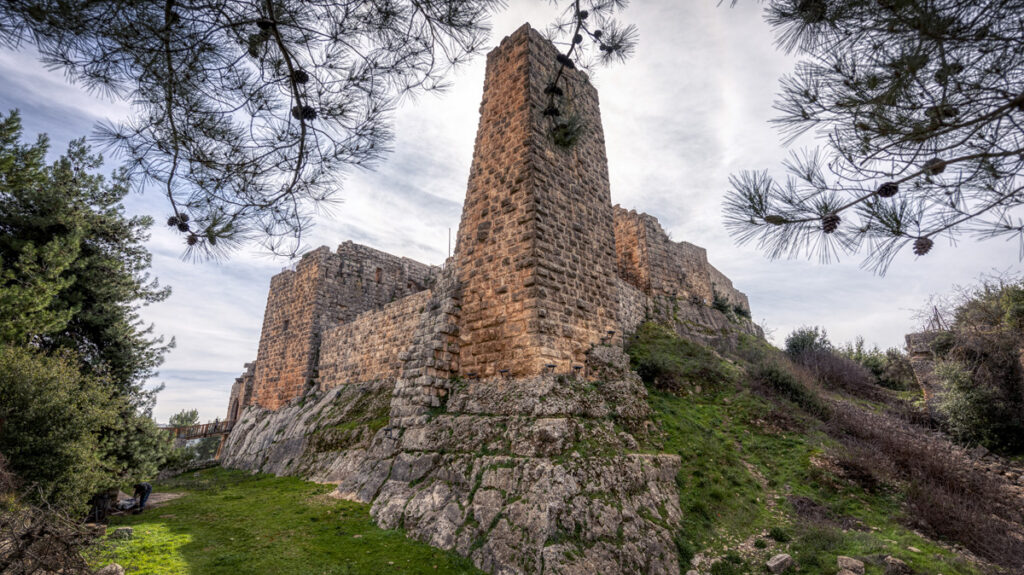
During the 12th century, the Crusaders asserted control over southern Jordan, leaving a lasting architectural legacy. This era is marked by the construction of four imposing castles at al-Kerak, ash-Shawbak, al-Wuayra near Petra, and al-Habis within Petra. These fortifications not only symbolised power but also played a vital strategic role.
The castle at Ash-Shawbak, for instance, disrupted the key route between Cairo and Damascus. Arab geographer Yaqut al-Hamawi noted its influence, writing that “owing to the construction of ash-Shawbak, the passage from Egypt to Syria was blocked.” Its location also posed a challenge to Syrian pilgrims travelling to Mecca and Medina. Southern Jordan’s significance during this period extended beyond its strategic position. The fertile plains of Balqa and al-Kerak produced ample agricultural surplus, while the Bedouins of the nearby deserts supplied valuable livestock, including sheep, goats, and camels. Additionally, the region’s defensive terrain proved invaluable during the final years of Frankish rule.
Together, these elements highlight southern Jordan’s critical role in the Crusader era, blending agriculture, trade, and military might into a pivotal chapter of history.
